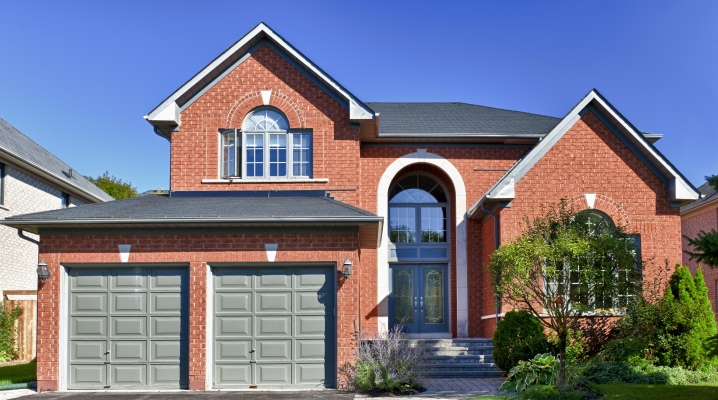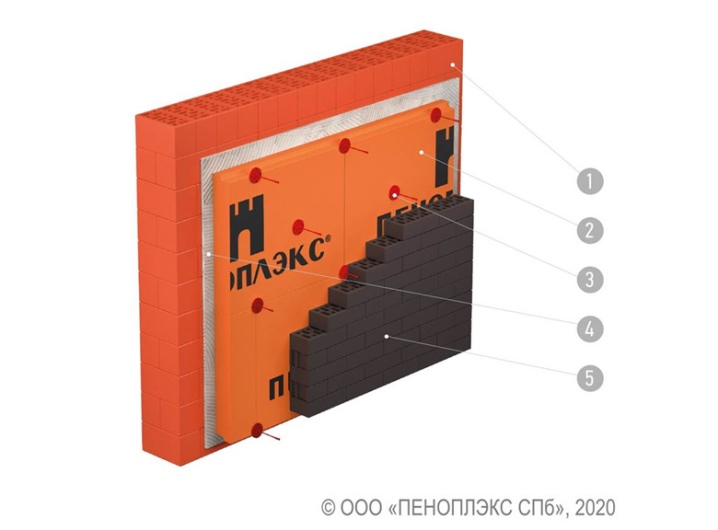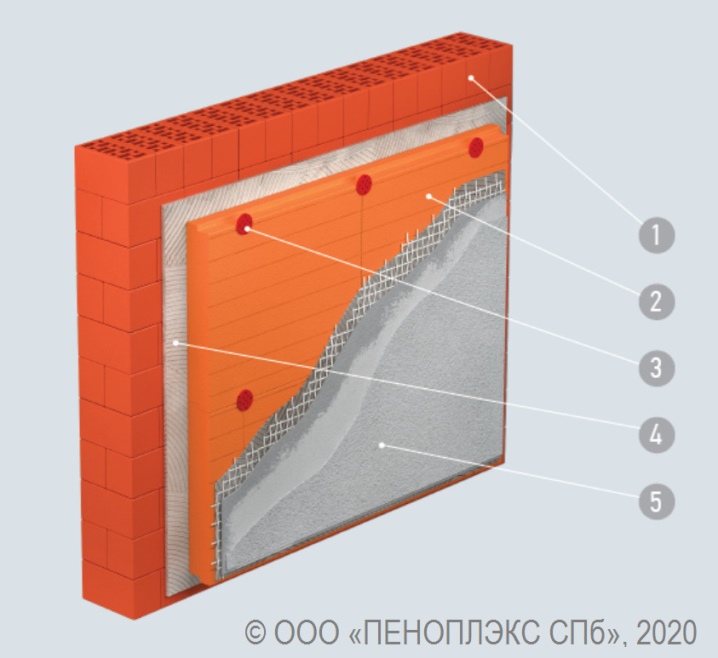Heat of a brick house with PENOPLEX®

Brick walls are durable, environmentally friendly, aesthetic expressiveness, so many people prefer to build houses from this time-tested material.
Modern technologies make it possible to reduce costs both for the construction of a brick house, and in the future for its maintenance. The secret of such savings, however, known to everyone who is in the slightest degree versed in construction issues, lies in the use of effective insulation. These materials, firstly, reduce the thickness of the walls, secondly, they reduce heat losses in the cold season and save heating costs and, thirdly, they keep cool in the heat and thereby reduce air conditioning costs.
These useful functions are performed due to the low thermal conductivity of the insulation. One of the best indicators among all types of thermal insulation is that of extruded polystyrene foam.
High quality PENOPLEX boards® from this material have a coefficient of thermal conductivity in real operating conditions not more than 0.034 W / m ∙ K.
By the way, this is 30–60% lower than that of various varieties of mineral wool or foam, and almost 25 times less than that of solid clay brick masonry.
PENOPLEX® is distinguished by such an important advantage over the mentioned heat-insulating materials as zero water absorption. This maintains a consistently low thermal conductivity coefficient in conditions of high humidity and even during flooding. 0.034 W / m ∙ K is the maximum value of the parameter declared by the manufacturer just taking into account the possible extreme humidity, under standard conditions it is lower. Mineral wool and polystyrene, due to their fibrous and granular structures, respectively, absorb moisture much more easily and rather quickly lose their heat-shielding properties.
Among the other advantages of PENOPLEX® over the above-mentioned materials, we highlight environmental safety, biostability, optimal geometric shape with an L-shaped edge at the ends for overlapping joints and exclusion of cold bridges, durability from 50 years.
Thus, the use of PENOPLEX® thermal insulation ensures reliable retention of heat in winter and coolness in summer in brick buildings.
Consider three options for technical solutions using PENOPLEX® for thermal insulation of brick walls, depending on the finishing material.
Well masonry
Over the centuries, architects have often used the expressive capabilities of brick walls without resorting to cladding. In our time, decorative brick has become widespread, which, in combination with wall brickwork and PENOPLEX® thermal insulation boards, emphasizes the beauty of the material and provides reliable thermal protection of premises.
1 - Brick wall
2 - PENOPLEKS thermal insulation®
3 - Flexible ties for mechanical fastening of thermal insulation and brickwork
4 - Adhesive composition for thermal insulation
5 - Decorative brickwork
Well, it is also layered or three-layer masonry is widely used both in individual housing construction and in the mass construction of housing and real estate for other purposes.

Plaster facade of a brick building
Many architectural masterpieces of the 18th – 19th centuries, which St. Petersburg is so rich in, are just brick buildings with plaster walls, for example, the Winter Palace, Peter and Paul Cathedral, the Admiralty and many others.
In modern private housing construction, such solutions are very popular.

1 - Brick wall
2 - Thermal insulation PENOPLEX WALL®
3 - Dowel kit
4 - Adhesive composition for thermal insulation
5 - Protective decorative plaster, which includes a base layer of an adhesive composition, a polymer mesh recessed into it, a second base layer of an adhesive composition, a facade primer and a finishing layer of decorative plaster.
Especially for plaster facades, the PENOPLEX company offers PENOPLEX STENA thermal insulation boards® with increased adhesion to plaster and adhesives due to notches and rough surface of factory quality.
Brick wall with siding trim
One of the most affordable types of cladding today also provides some aesthetic possibilities. There are sidings that imitate timber, natural stone, the same brick and other popular finishing materials.

1 - Brick wall
2 - PENOPLEKS thermal insulation®
3 - Siding
4 - Vertical guides
5 - Adhesive composition













The comment was sent successfully.